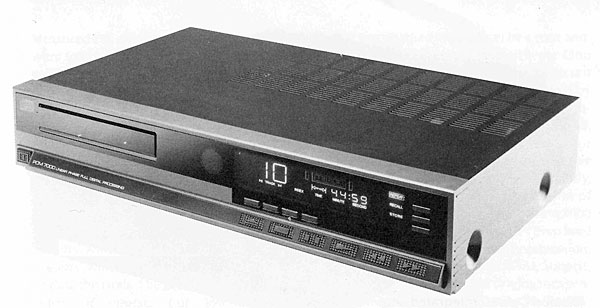| Columns Retired Columns & Blogs |
I've had mine for 30 years and the only thing I had to do was replace the LED for the power indicator.

The sound: I liked the PCM 7000. Low frequencies were well-defined, the treble was lightish in balance, though a little reticent in the top octave, and stereo imaging was spacious and well-defined. Perhaps more importantly, as far as I am concerned, was the fact that there was a lack of "digital edge," the sound being easy to live with. It was not quite as overwhelmingly detailed or as consistently musical as the Stax Quattro reviewed in Vol.10 No.5, but provided a considerable degree of pleasure.
My final listening was with the low-level fade on CBS's CD1 test disc. This 500Hz tone was dithered so that it should sound like a pure tone mixed with noise, even at levels below the "theoretical" resolving point of a 16-bit digital system. If you hear distortion on this fade, then you can be sure that it comes from the player. The 7000 fared quite well on this test, the tone being reasonably pure at the -60dB starting point of the fade. As the level dropped, high-order harmonics could be heard to swell and fade at different levels, showing that the DAC's linearity is a little uneven. The Mission PCM 7000 didn't produce as pure a tone as the Stax Quattro in this respect, but was actually better than the $8000 Accuphase machine.
The remote volume control was a boon! Not only did it enable the PCM 7000 to be used straight into the power amplifier, it made possible fine-tuning of playback level without my having to get up from my listening chair! This is the CD player for couch potatoes. It perhaps is a little expensive now, in view of the performance offered by the Sony 4x oversampled machines appearing in the stores this Fall, but can be nevertheless recommended.

I've had mine for 30 years and the only thing I had to do was replace the LED for the power indicator.